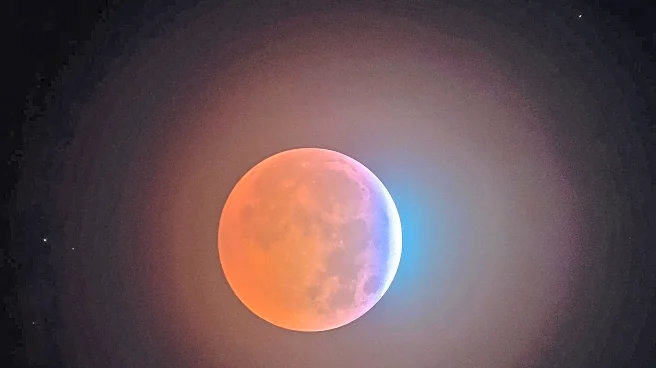What's Happening?
On November 5, 2025, the largest supermoon of the year, known as the Beaver moon, will be visible across North America. This supermoon is defined by its proximity to Earth, appearing 10% closer than the average full moon, which makes it look larger and
brighter. The moon will be 221,817 miles from Earth, making it the closest supermoon of the year. Observers are encouraged to find elevated locations or open fields to view the moon as it rises, where it may appear larger and take on a yellow-orange hue.
Why It's Important?
The supermoon event is significant for its ability to engage the public with astronomical phenomena, fostering interest in science and the natural world. It provides an opportunity for educational outreach and community events centered around astronomy. The visibility of the supermoon across North America allows for widespread participation and appreciation of this celestial event. Additionally, the cultural and historical significance of the Beaver moon adds depth to the experience, connecting modern observers with past traditions and practices.
What's Next?
Following this supermoon, another is expected in December 2025, continuing the series of notable lunar events. Observatories and educational institutions may plan events or provide resources to enhance public engagement and understanding of these phenomena. The ongoing interest in supermoons may also inspire further exploration and study of lunar cycles and their impact on Earth.













